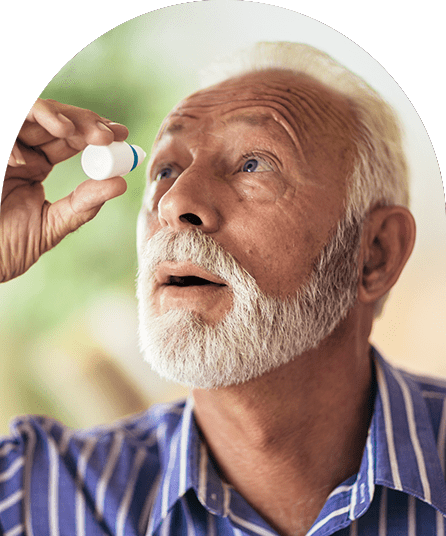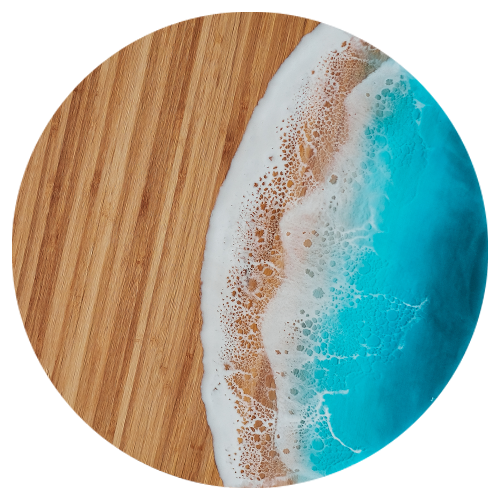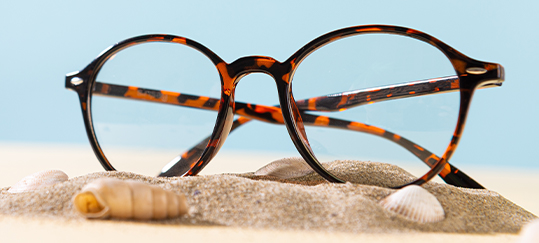Getting Dry Eye Relief
Dry eye can be challenging to deal with, but you don’t have to face it alone. Dr. Wilder and the rest of the team are committed to helping you overcome dry eye symptoms, such as blurry vision, watery eyes, and irritation caused by inflammation.
Our technology plays a big role in our dry eye treatment services. Through OptiLight by Lumenis and detailed dry eye exams, we provide a full-scope dry eye care experience.
Our team is always looking to evolve and find new ways to help our patients through advancements in dry eye care. Contact us to schedule an appointment and get relief from dry eye today.
Request Appointment

What Is Dry Eye?
Dry eye is a condition that can be caused by inconsistencies in your tear film, which consists of 3 layers:
- The oily outer layer
- The watery middle layer
- The inner mucus layer
When the glands that produce these elements of your tears are not functioning properly or become inflamed, dry eye can occur. Inflammation and other dry eye symptoms can also result from meibomian gland dysfunction (MGD).
Understanding Dry Eye
While the term “dry eye syndrome” covers symptoms such as dryness, watering, grittiness, and vision changes, “ocular surface disease” is a broader term that encompasses the most common factors that contribute to these symptoms.
Ocular surface disease refers to a range of issues that can affect the front surface of the eye, the eyelids, and the underlying oil and tear glands. Inflammation is one of the leading causes of dry eye symptoms and can manifest in several forms, including:
- Blepharitis
- Ocular rosacea
- Demodex
- Meibomian gland dysfunction
What Causes Dry Eye?
Dry eye is a multifaceted condition that can be caused by a variety of factors and can generally be classified into 2 main types, aqueous-deficient and evaporative.
These different types of dry eye feature different characteristics and causes.
Aqueous-Deficient Dry Eye
Aqueous-deficient dry eye occurs when the eye fails to produce enough of the watery component of tears, known as aqueous tears. This deficiency arises when the lacrimal glands located in the conjunctiva do not function properly due to various causes such as autoimmune diseases, medications, obstructions, or damage.
As a result, the volume of tears available is insufficient to protect the ocular surface or provide comfortable and stable vision.
Evaporative Dry Eye
Evaporative dry eye occurs when there is not enough oil in the tears, leading to the quick evaporation of tears from the ocular surface. This condition is more common than other types of dry eye and can cause symptoms such as dryness, irritation, redness, and blurred vision.
Evaporative dry eye occurs when there is an inadequate or unhealthy lipid layer in the tear film, leading to unstable tears. The most common cause of evaporative dry eye is meibomian gland dysfunction (MGD).
MGD & Dry Eye
Meibomian gland dysfunction (MGD) is a chronic and progressive condition that can affect the function of the meibomian glands in your eyelids. These glands produce an oil layer that helps lubricate the surface of your eyes and prevent tears from evaporating too quickly.
However, with MGD, the oils produced by your glands can become thicker and clog the glands, leading to inflammation, eyelid irritation, and dry eye symptoms such as eye irritation, watery eyes, and a scratchy feeling.
OptiLight by Lumenis helps treat MGD by gently stimulating the meibomian glands, helping them to release the natural oils needed to lubricate the eyes. We also offer meibomian gland expression as one of our treatment options.
Our Dry Eye Screenings
Meibography
Meibography is an imaging technique that enables us to visualize the morphology of the meibomian glands located in the eyelids. This technique captures detailed images of the glands, revealing their size, structure, and any abnormalities or changes.
Meibography is a noninvasive imaging method that helps to diagnose and manage various ocular conditions associated with meibomian gland dysfunction (MGD), including dry eye syndrome, ocular rosacea, and blepharitis.
Dyes & Staining
Dyes and staining techniques are commonly used in the assessment of dry eye. There are several solutions that can be used to evaluate the health of the ocular surface, including the cornea and conjunctiva, such as lissamine green dyes.
These dyes are applied to the eyes, and any damage or abnormalities on the ocular surface will be visualized through a slit lamp microscope.
Automated & Subjective TBUT
Tear break-up time (TBUT) testing measures the time it takes for the tear film on the ocular surface to break up. This test can be performed subjectively by a clinician or objectively using an automated device.
Subjective TBUT involves a clinician observing the tear film through a slit-lamp microscope and noting the time between blinking and the appearance of dry spots on the ocular surface.
Automated TBUT uses devices that can produce more objective and accurate measurements of TBUT. These devices use advanced imaging technology to provide high-resolution images of the tear film.
InflammaDry
InflammaDry is a diagnostic test used to evaluate dry eye syndrome by detecting the presence of inflammation on the ocular surface. The test can identify increased levels of matrix metalloproteinase-9 (MMP-9), an inflammatory marker consistently elevated in the tears of individuals with dry eye.
The InflammaDry test is quick and noninvasive, taking only a few minutes to complete in-office.
Anterior Surface Imaging
Anterior surface imaging helps capture high-resolution, high-magnification images of the lid margins. These images can reveal subtle changes in the structure and function of the eye that may indicate the presence of dry eye disease, blepharitis, Demodex mites, and ocular rosacea.
For example, the technology can detect changes in the thickness and contour of the cornea, as well as irregularities in the tear film that may be contributing to dryness.
OSDI
The Ocular Surface Disease Index (OSDI) is a valuable tool for screening and diagnosing dry eye disease. This questionnaire-based survey assesses the severity of dry eye symptoms through a series of questions related to vision, ocular discomfort, and environmental triggers.
Take the test here to find out your score.
Our Dry Eye Treatment Methods
We understand that dry eye can bring with it discomfort and inconvenience. That’s why we offer various dry eye treatments and solutions to help you find relief. Our dry eye treatment methods include OptiLight by Lumenis, meibomian gland expression, punctal plugs, and more.
We want to address the underlying cause of your dry eyes, and our team will work with you to find the right treatment method.
OptiLight by Lumenis
OptiLight by Lumenis is a light-based, noninvasive treatment done in the area below the eyes to manage dry eye. The first and only IPL FDA-approved for dry eye management.
The treatment is safe, gentle, and is backed by more than 20 clinical studies.
OptiLight uses precise pulses of light to reduce the inflammation that is typically associated with dry eye disease, improve tear break-up time, and increase meibomian gland functionality.
Punctal Plugs
Punctal plugs are small devices placed into tear ducts to block the drainage of tears and help keep your eyes moist and prevent them from drying out too quickly.
Punctal plugs are an efficient treatment method that can be effective in providing lasting relief from dry eye symptoms. Our team will work with you to determine whether punctal plugs are the right treatment option for your unique needs.
Medicated Drops
Medicated eye drops can be an effective treatment option to relieve your dry eye discomfort.
Dry eye-specific prescription eye drops contain an active ingredient that can help reduce inflammation and increase the eye’s natural ability to produce tears.
Meibomian Gland Expression
If you’re experiencing dry eye symptoms, meibomian gland expression may be able to help.
This noninvasive procedure involves applying gentle pressure to the meibomian glands. By expressing the oil, the quality and quantity of your tears can improve, reducing dry eye symptoms such as irritation and watery eyes.
Eyelid Debridement & Supplements
Eyelid debridement is a procedure that involves removing debris and bacteria from the eyelids, particularly along the eyelash line, to improve the ocular surface’s overall health and function.
Omega-3 supplements, including fish oil or flaxseed oil, are another commonly used treatment for dry eye. Omega-3 fatty acids have anti-inflammatory properties that can improve the quality of tears and reduce inflammation on the ocular surface.
ZEST
ZEST treatments exfoliate and debride the lid margins and lash-lines witha special formula that fights inflammation and kills Demodex mites.
This deep clean is done with an anesthetic drop for optimal patient comfort and takes only 15 minutes. While at-home lid hygiene is important, some patients may benefit from a more intensive approach to achieve optimal eyelid maintenance.
Amniotic Membrane
In severe dry eye patients, the ocular surface can become compromised. This process can result in severe discomfort and vision fluctuation.
Amniotic membranes are placed on the ocular surface for several days allowing for improved stem cell function and reduced inflammation. This results in a more stable ocular surface and improved visual function.
The TearCare System
The TearCare system is a treatment option for individuals with dry eye due to meibomian gland dysfunction (MGD). The TearCare device provides localized heat therapy to the meibomian glands located in the eyelids, which can become blocked or inflamed, leading to a reduction in tear production and ocular discomfort.
The TearCare system is a wearable device that administers gentle heat to the meibomian glands, promoting the secretion of higher-quality tears and improving the overall health of the ocular surface.
Importance of Home Lid Hygiene
Establishing healthy habits is essential for maintaining overall health, including ocular health. For patients experiencing symptoms of dry eye or ocular surface disease, practicing good home lid hygiene is a crucial first step.
These conditions are often caused by inflammation, and keeping the eyelid margins clean and preventing oil gland blockages can help to reduce inflammation and promote natural healing processes.
To assist patients with their home therapy, we provide printable instructions that outline best practices for managing dry eye syndrome and ocular surface disease. We also offer recommended products that are available for purchase through Dry Eye Rescue, where you can receive 10% off your online order!
Dry Eye Rescue
To help provide effective dry eye products to our patients, we have partnered with Dry Eye Rescue to provide our patients with trusted treatment options. All the products we recommend to maintain good lid hygiene, including quality eye drops, and even makeup, are available through Dry Eye Rescue online.
Our recommended products are also available in our office.
Visit Dry Eye Rescue today to learn more and find the dry eye relief product you need.
Comprehensive Dry Eye Services
Dr. Wilder and the team at Coastal Family Eyecare are committed to helping you take your comfort back from dry eyes. Our technology, experience, and commitment help us get to the bottom of your dry eye symptoms and find a solution that works.
Contact us to schedule an appointment and address your dry eye symptoms today.
Request AppointmentCome Visit Us
Visit Us
Where to park?
We are located beachside, right across from San Roc Cay Marina. Our office is just west of the Gulf Restaurant.
Our Address
- 27250 Perdido Beach Blvd., Unit C
- Orange Beach, AL 36561
Contact Information
- Phone: 251-974-1233
- Email: [email protected]
Our Hours
- Monday: 8:30 AM – 5:00 PM
- Tuesday: 8:30 AM – 5:00 PM
- Wednesday: 8:30 AM – 5:00 PM
- Thursday: 8:30 AM – 5:00 PM
- Friday: 8:30 AM – 3:00 PM
- Saturday: Closed
- Sunday: Closed
Our Services
Our Brands

















